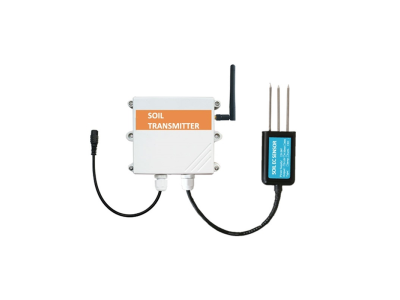Precision agriculture has become a vital approach to optimize farming practices and maximize crop productivity. Central to this approach is the utilization of advanced technologies, such as soil sensors, that provide real-time data on soil conditions. This article explores the potential of soil sensors in optimizing irrigation and nutrient management, their functionality, benefits, and future prospects.

Importance of Irrigation and Nutrient Management:
Irrigation and nutrient management are essential components of crop production. Efficient use of water and nutrients not only enhances crop productivity but also reduces environmental impacts. Over- or under-irrigation can lead to waterlogging, soil erosion, and nutrient leaching, resulting in lower yields and degraded soil quality. Precise nutrient management ensures that crops receive the necessary nutrients for optimal growth, reducing fertilizer usage, minimizing nutrient runoff, and mitigating environmental impacts.Understanding Soil Sensors:
Soil sensors are electronic devices designed to measure various soil parameters, including moisture content, temperature, pH levels, nutrient levels, and salinity. These sensors can be placed directly in the soil or at various depths within a field, collecting data continuously. The information gathered by soil sensors is transmitted wirelessly to a central monitoring system, where it is analyzed and made available to farmers through user-friendly interfaces.
Functionality of Soil Sensors for Irrigation Management:
Soil sensors utilize different technologies to measure soil properties accurately. Capacitance-based sensors measure soil moisture by analyzing the electrical conductivity between two metal electrodes. These sensors can be installed at various depths in the soil profile, providing information on soil moisture at different depths. By analyzing this data, farmers can determine the optimal irrigation schedule, ensuring that crops receive the right amount of water at the right time. Additionally, soil moisture data can be used to identify areas of the field that require more or less irrigation, allowing for precision irrigation.
Benefits of Soil Sensors for Irrigation Management:
4.1. Efficient Water Management: Soil sensors provide real-time soil moisture data, enabling farmers to optimize irrigation practices. By avoiding over- or under-irrigation, farmers can minimize water waste, reduce energy costs associated with pumping water, and improve crop yield and quality.
4.2. Reduced Water Consumption: Precise irrigation management leads to reduced water consumption, conserving this finite resource. This is particularly important in areas with limited water resources, where efficient irrigation practices are critical for sustainable agriculture.
4.3. Improved Crop Quality: Optimal irrigation schedules ensure that crops receive the right amount of water at the right time, resulting in improved crop quality. Consistent soil moisture levels reduce stress on plants, leading to higher yields, better fruit quality, and increased nutritional value.
Functionality of Soil Sensors for Nutrient Management:
Soil sensors can be used to monitor nutrient levels in the soil accurately. Electrochemical sensors measure pH levels, which influence nutrient uptake by plants. Additional sensors can be incorporated to measure specific nutrients such as nitrogen, phosphorus, and potassium. By analyzing this data, farmers can determine the optimal fertilizer schedule, ensuring that crops receive the necessary nutrients for optimal growth.
Benefits of Soil Sensors for Nutrient Management:
6.1. Reduced Fertilizer Usage: Precise nutrient management reduces fertilizer usage, minimizing environmental impacts and reducing costs.
6.2. Minimized Nutrient Runoff: Over-fertilization can lead to nutrient runoff, polluting water resources and degrading soil quality. Precise nutrient management minimizes this risk, protecting water quality and soil health.
6.3. Improved Crop Quality and Yield: Optimal nutrient management leads to improved crop quality and yield. By providing crops with the necessary nutrients, farmers can enhance productivity and profitability.
Future Prospects and Challenges: The potential of soil sensors in optimizing irrigation and nutrient management is vast, and ongoing developments in technology continue to expand their capabilities. Future prospects may include the integration of soil sensors with other agricultural technologies, such as drones, satellite imagery, and robotics. This integration would enable more comprehensive and real-time monitoring of crops, further enhancing decision-making capabilities.
However, challenges remain in the widespread adoption of soil sensors. The initial investment costs can be a barrier for small-scale farmers, and technical expertise is required to interpret sensor data accurately. Integrating soil sensors into existing farm management practices and ensuring user-friendly interfaces are also critical for successful implementation.
Conclusion:
Soil sensors are revolutionizing precision agriculture by providing real-time insights into soil conditions. By optimizing irrigation and nutrient management, these sensors enhance crop productivity while minimizing environmental impacts. As technology continues to advance, soil sensors hold great promise for the future of sustainable and efficient agriculture. By embracing these innovative solutions, farmers can improve yields, reduce costs, and contribute to global food security.






